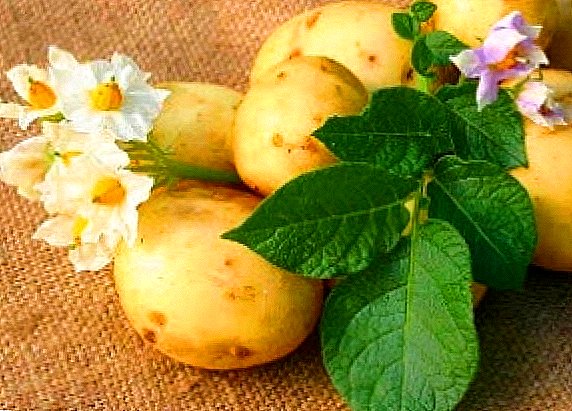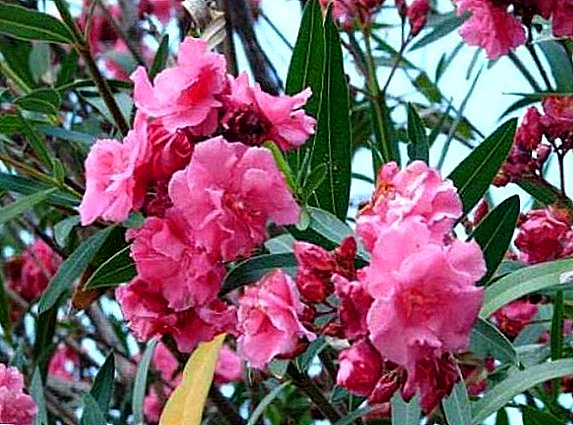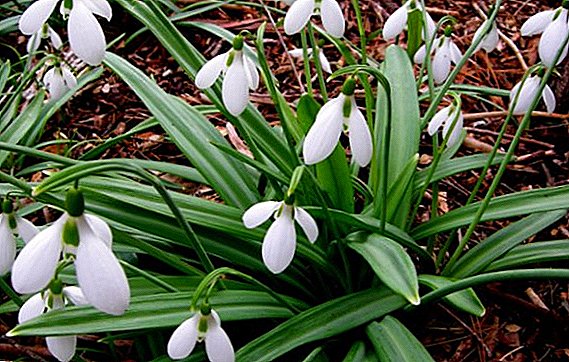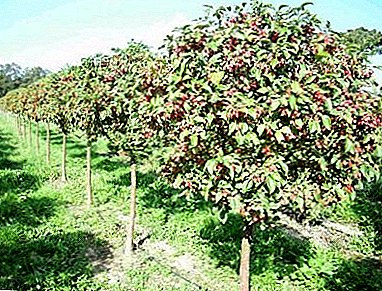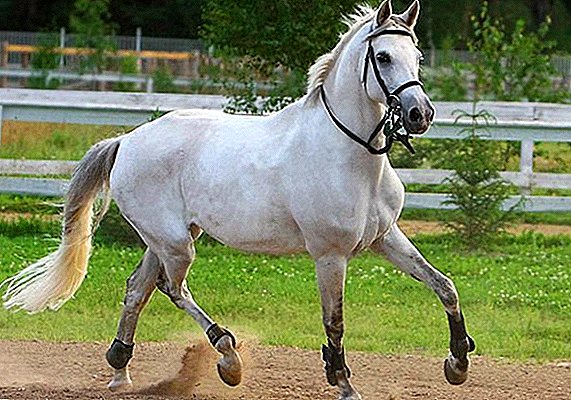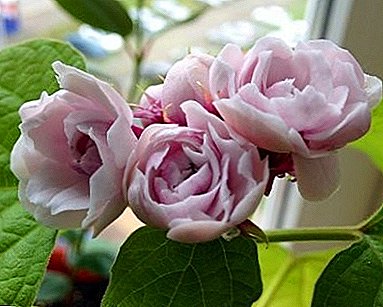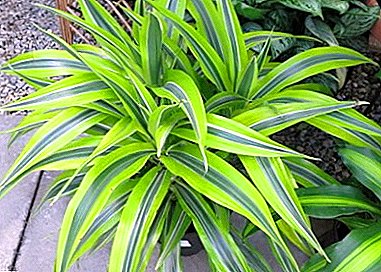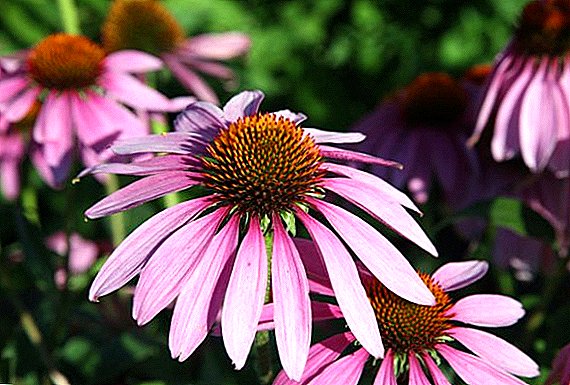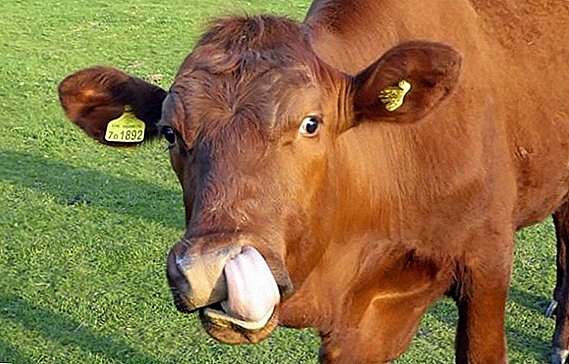 Today in the world there are about 250 different breeds of cows. Depending on the predominant household purpose, they are all divided into three groups - dairy, meat and combined. For a small farm, the last category of cattle is of the greatest interest, because such animals are notable for both good milk yield indicators and quick weight gain. One of the Russian breeds belonging to this particular area is the Krasnogorbatov cow.
Today in the world there are about 250 different breeds of cows. Depending on the predominant household purpose, they are all divided into three groups - dairy, meat and combined. For a small farm, the last category of cattle is of the greatest interest, because such animals are notable for both good milk yield indicators and quick weight gain. One of the Russian breeds belonging to this particular area is the Krasnogorbatov cow.
History of origin
The breed is obliged by its name to the place of its breeding - Gorbatovsky district of Nizhny Novgorod province (Russia). It was here, in the village of Bogorodskoye, at the beginning of the 19th century that the Tyrolean cows introduced from Switzerland (another name is Oberintaler), who gave milk of very high fat content, but poorly acclimatized due to the unusual climate and food supply, began to cross with local Prioksky cows. Breeders were landowners themselves; no scientific approach was used, however, local animals of strictly red color were selected for crossing, which later became the hallmark of the new breed and identified the first part of its name.  People's selection gave an unexpectedly successful result, and the breed soon became famous in the neighboring provinces, quickly gaining the fame of one of the best in the country. Krasnogorbatovy cows received official recognition in 1926.
People's selection gave an unexpectedly successful result, and the breed soon became famous in the neighboring provinces, quickly gaining the fame of one of the best in the country. Krasnogorbatovy cows received official recognition in 1926.
In the second half of the twentieth century, the breed was further improved by re-crossing with Tyrolean bulls, as well as adding blood to the northern Great Russian breed. Since the 1970s, the breed has been bred “in itself” without the participation of foreign genes.
Learn about the best breeds of dairy and meat cows.
However, despite its former popularity, nowadays almost no one is engaged in breeding Krasnogorbatovsk cows in Russia, and cows of domestic breeding are rapidly losing ground. Now Krasnogorbatovsk cows make up less than 1% of the total number of cow livestock in Russia, which is an insignificant indicator for a highly productive breed of domestic breeding.
Today you can call only two professionally breeding its enterprises. In addition to the plant, ZAO Ababkovskoe, located in the Pavlovsky district of the Nizhny Novgorod region (until 1918, that same Gorbatovsky district), in the homeland of breeding, the Zimenki plant, located in the village of the same name in the Murom district of the Vladimir region, also specializes in breeding it. 
Description and Features
Cows bred in the Nizhny Novgorod province have quite distinctive distinctive features that make it possible to distinguish them from other breeds of cattle.
Appearance and physique
The only possible color characteristic of the breed is cherry red. This color is especially bright in bulls. The udder, the tip of the tail and the belly of the little girls may have bright markings, but on the contrary, the head and neck are always dark, almost black. The horns are strong and not too long, have a light shade, darker towards the ends, the nose is light pink.
Read about white cow breeds.
Particularly large size animals of this breed do not differ:
- adult height at withers - usually about 1 m 20 cm, sometimes several centimeters more;
- torso length - 145-155 cm;
- backbone - light;
- head - shortened;
- neck - not too long, but wide;
- chest - wide and deep, 36-39 cm wide, 60-67 cm deep and 180-182 cm in girth;
- back - straight;
- legs - in animals of both sexes, straight and short;
- udder - medium size, the nipples are planted closely, evenly developed, have a conical shape.
 Weight indices for gobies fluctuate between 650–900 kg, and for hens - 420–650 kg. Despite such modest dimensions, the breed is distinguished by a very proportional, slightly elongated, but rather strong constitution and well-developed muscles.
Weight indices for gobies fluctuate between 650–900 kg, and for hens - 420–650 kg. Despite such modest dimensions, the breed is distinguished by a very proportional, slightly elongated, but rather strong constitution and well-developed muscles.
We recommend to find out what determines the weight of the cow and what are the average indicators of weight in a bull, a cow and a calf.
Another distinctive feature of the breed is a slightly raised loin with a long and wide tail set high (a roof-like backside, however, is considered a marriage).
Meat and Dairy Indicators
Krasnogorbatovskie cows are universal. This means that in terms of milk yield, the breed of world records does not beat, but on average, its milk and meat productivity looks quite good. The main figures characterizing its economic value:
| Average yield per season | 2700-4000 kg of milk |
| Maximum yields | With a very good content can reach 6500-8000 kg |
| Average fat milk | 4,1-4,5% |
| Maximum fat content of milk | 5-6% |
| The protein content in milk | up to 4% |
| The period of increasing yields | It can last up to the sixth lactation, then there is a slight decrease in the average annual volume of milk. |
| Newborn calf weight | 23-29 kg; |
| Average calf weight set per day | 1 kg |
| Calves weight gain by six months | 150-165 kg |
| Slaughter meat | In 54% in calves and 62% in bulls; |
| Meat | Rich in protein and contains minimal amount of fat, and therefore it is very easy to digest. |
| Tastes of meat and milk | Very high. |
Important! The balanced nutrient content of Krasnogorbatov’s milk and its very high fat content make it suitable for making high-quality hard cheeses, cream and various dairy products.
The universality of the breed is evidenced by the fact that zealous owners successfully use not only meat and milk, but also the skin of these animals. Its strength and elasticity provide the opportunity for good dressing and are highly valued in the manufacture of clothing, shoes and various accessories.
Advantages and disadvantages
Krasnogorbatovskiy cows have a number of undeniable advantages:
- remarkable property to adapt to different conditions of detention, at one time ensured the breed spread almost throughout the territory of Russia;
- high immunity and excellent survival of young;
- unpretentiousness to conditions of maintenance and forage;
- resistance to many diseases, in particular leukemia, brucellosis and tuberculosis;
- strong build and resistance to injuries, including horns and hoofs (more than a third of injuries that can occur in cows are associated with these parts of the body);
- rapid weight gain and ability to maintain weight characteristics even with a temporary deterioration in the quality of nutrition;
- the ability to give good productivity indicators on free grazing, without the use of expensive feed and vitamin supplements;
- high fat content and excellent taste of milk;
- diet and tender meat.

It will probably be useful for you to learn how to milk a cow correctly and what are the advantages and disadvantages of milking machines.
Nevertheless, Krasnogorbatov’s cows have some drawbacks, namely:
- weak limbs;
- underdeveloped muscles;
- sagging of the sacrum (in some individuals, the back also sags);
- the structure of the udder is poorly suited for machine milking (the middle lobe is poorly developed);
- small and inaccessible breed.
Care and feeding ration
Unlike its ancestors, the Tyrolean cows, the Krasnogorbatov hybrid feels very good in Russian realities and does not require special treatment, which would significantly distinguish the content of this breed from others. The breed is generally suitable for both tethered and non-adherent housing.
Requirements for the room
Since this is a small breed, a relatively small room can be adapted for its maintenance, but it must still be fully equipped in advance, without waiting for the onset of cold weather.
Choosing the size of the barn, it should be assumed that the animal must feel free in it.
Important! The standard size of the barn suggests 6 square meters. square meters per adult and 10 square meters. meters per cow with a calf with a room height of at least 2.5 meters.
Thus, the cow will be able to lie down freely, allowing his hooves to rest, and also walk a little, which is also necessary for the normal functioning of all organs and systems.  The optimal temperature indicators for keeping cattle are in the range from 15 to 18 ° C, while in winter the thermometer should not fall below 10 ° C. Thus, it is necessary to warm the room in which Krasnogorbatov's cows will be kept, practically in all regions of Russia and the near abroad.
The optimal temperature indicators for keeping cattle are in the range from 15 to 18 ° C, while in winter the thermometer should not fall below 10 ° C. Thus, it is necessary to warm the room in which Krasnogorbatov's cows will be kept, practically in all regions of Russia and the near abroad.
Learn how to build a do-it-yourself cow shed.
One of the most common causes of infectious diseases affecting a horned herd is the lack of ventilation, but the animal’s body also reacts very badly to drafts.
Water supply must be provided in the barn, since cleanliness (both of the room itself and its inhabitants) is a mandatory requirement, compliance with which will prevent the incidence of animals and infection of milk.
Another important requirement for the design of the room - the presence of an inclined flow for urine and manure, keeping the litter in dryness and cleanliness.  The device of slit floors in the barn: 1 - feeding; 2 - slotted part of the floor; 3 - manure channel Natural materials such as straw, sawdust, sand, peat, dried manure, etc. can be used as bedding.
The device of slit floors in the barn: 1 - feeding; 2 - slotted part of the floor; 3 - manure channel Natural materials such as straw, sawdust, sand, peat, dried manure, etc. can be used as bedding.
Important! Each cow must be washed in the udder area before and after milking to prevent the development of purulent mastitis!
However, this flooring has two significant drawbacks:
- first, it must be constantly changed (the litter must always be dry, clean and warm) and, consequently, acquire and store large stocks of relevant material;
- secondly, what is even worse, pathogenic microorganisms multiply very quickly in such a litter, some of which may initially be present in poor-quality material, while the other part gets there from the remnants of food and excrement.
When designing a barn, we should not forget about such an indicator as lighting.
 In addition, the presence of good illumination greatly simplifies the process of cleaning in the barn, and also allows you to detect possible health problems of its inhabitants in time. For additional illumination, it is best to use LED light bulbs, which are more energy efficient than incandescent bulbs. It must be borne in mind that the material from which the luminaires are made must be resistant to ammonia, since this gas is emitted in large quantities by cows in the course of their vital activity and may damage some types of lighting fixtures.
In addition, the presence of good illumination greatly simplifies the process of cleaning in the barn, and also allows you to detect possible health problems of its inhabitants in time. For additional illumination, it is best to use LED light bulbs, which are more energy efficient than incandescent bulbs. It must be borne in mind that the material from which the luminaires are made must be resistant to ammonia, since this gas is emitted in large quantities by cows in the course of their vital activity and may damage some types of lighting fixtures.
Did you know? It has long been known that artificial extension of daylight in a chicken coop significantly increases the egg production of laying hens, however recent studies have shown that in the same simple way you can significantly increase the milk yield of cows.Certain requirements are imposed on the arrangement of feeders. Access to food and water should be convenient, animals should not crowd and interfere with each other in the process of eating. It is best to make the feeder in the form of an inverted trapezoid, it protects the food from excessive scattering, facilitates cleaning and is convenient for the animal itself. The optimal distance from the feeder to the floor is 7 cm. Feeder dimensions:
- width - 40 cm below and 60 cm above;
- length - 30 cm at the stall and 75 cm at the aisle.

If the feeders are made of wood, the boards must first be very thoroughly cleaned, removing any splinters, protruding nails and other parts that can injure the animal. Finally, considering the placement of feeders, it must be borne in mind that the breath of a cow in a horizontal position should not fall on the feed, otherwise it will dampen and deteriorate.
Did you know? For good health and high milk productivity, a cow needs to lie down no less than 12 hours a day - only in this case the animal gets proper rest.
Drinking bowls should be located away from the feeders so that the water from them does not mix with the feed. It is best to use an automatic water supply to the drinkers; if this is not possible, the water must be constantly changed.
Stall for medium-sized Krasnogorbat cows can be made of wooden bars or metal pipes. It is only important that they are well fixed, otherwise the animal can be seriously injured. The location of the cow in the stall should take into account the place of the feeder (on the side of the muzzle) and the drain for feces (on the side of the tail).
Cleaning the barn
With proper arrangement of the barn (automatic water supply, the presence of runoff for urine and manure, good lighting and modern inorganic bedding from environmentally friendly materials) regular cleaning can be carried out without much effort.  Owner enough:
Owner enough:
- remove residual food from feeders;
- wash feeders and drinkers;
- clean the flooring;
- periodically disinfect.
Important! Krasnogorbatovskiy cows, as well as representatives of other breeds of cattle, must be systematically brushed and in the summer - bathed. Trimming the hooves and horns are also desirable hygienic procedures.
For all its undemandingness and endurance, the Krasnogorbat cow responds very sensitively to breaking the daily routine: so that productivity indicators are always at a high level, all sanitary procedures, cleaning, cleaning, bathing, and feeding should always be carried out at the same time the same sequence.
Feeding and watering
The dietary habits of Krasnogorbatov's cows depend on the age and purpose of the animal (sire, breeding calf, cow for dry meat, lactating female, fattening calves, etc.). But in general, animal feeding differs little from that of other breeds. It is necessary to feed the cows three times a day - four meals a day are necessary only for females in the postpartum period. In the morning and evening, the animals are given succulent feed and grain. Rough food is divided into several parts and given last, and concentrated - on the contrary, at the very beginning.
It is necessary to feed the cows three times a day - four meals a day are necessary only for females in the postpartum period. In the morning and evening, the animals are given succulent feed and grain. Rough food is divided into several parts and given last, and concentrated - on the contrary, at the very beginning.
Important! Feed lactating cows need after milking, and not in front of her.
In winter, cows should be given cleaned and well-washed root crops, and in summer, the breed is best kept on pasture grazing.
Before the first access to the pasture of all animals, a veterinarian should inspect. In addition, they should be fed first, so that the transition to summer food is carried out gradually, not on an empty stomach. All indicators of the productivity of a breed directly depend on the quality of meadow grass: milk yield, fat content and nutritional composition of milk, weight gain.  While grazing, animals should have access to clean water, but the pasture itself must be completely dry (cows that fall into the mud of a hoof have a very detrimental effect on its health). It is necessary to water the cows after each meal; at the same time, the water temperature should correspond to the air temperature and in no case be colder than 10 ° C.
While grazing, animals should have access to clean water, but the pasture itself must be completely dry (cows that fall into the mud of a hoof have a very detrimental effect on its health). It is necessary to water the cows after each meal; at the same time, the water temperature should correspond to the air temperature and in no case be colder than 10 ° C.
You also need to ensure that the herd does not overheat: in too hot days, animals need to be returned to the stall or ensure they are able to hide in the shade.
Read about how to make the right diet for a milk cow, as well as what are the feeding characteristics of dry cows.
It must be remembered: cattle calmly reacts to not very favorable conditions of housing, but it is extremely picky about the quality of food. Domestic breed shows a relative unpretentiousness to the composition of the feed, but only in comparison with other, much more capricious, their relatives. All the productivity indicators stated above can be provided only in the case when the horned herd feeds in strict accordance with the established norms.  Krasnogorbatovskaya cow was previously extremely popular in our area because of its many advantages, distinguishing it favorably among other breeds. The sharp drop in interest in it is primarily due to the mechanization of the milking process, for which the anatomical structure of the udder of these cows is not very suitable. However, for small private farms, compact red cows, characterized by amazing endurance and very good productive performance, can still become a real treasure.
Krasnogorbatovskaya cow was previously extremely popular in our area because of its many advantages, distinguishing it favorably among other breeds. The sharp drop in interest in it is primarily due to the mechanization of the milking process, for which the anatomical structure of the udder of these cows is not very suitable. However, for small private farms, compact red cows, characterized by amazing endurance and very good productive performance, can still become a real treasure.


